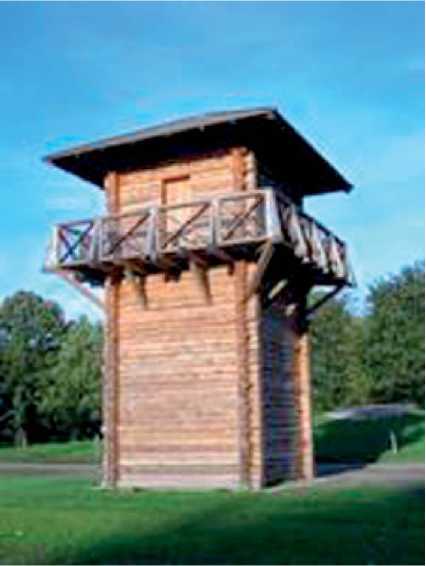By the formation of the Roman Empire in 27 BC, the Romans had already conquered large areas of Europe, including that of its central part. Macedonia became part of their state in the second century BC. Thrace, which had long been a dependent kingdom, was annexed to Rome in 46 BC. In early first century AD, new provinces of Raetia, Noircum, Pannonia, Moesia, and Dalmatia in southern part of Central Europe and in the Balkans were added to a rapidly growing empire. The Danube frontier was formalized during the reign of Augustus.
Along the Danube limes, the biggest threat to the Romans came from the Dacians, who formed a state in second century BC out of a broad confederacy of people occupying the uplands of Transylvania. In about 60-50 BC, King Burebista unified the kingdom and defeated the Transylvanian Celts, the Boii, and Helvetii forcing them westward. The Dacians had a state religion, monumental architecture, central storage facilities, currency, and control of a vast and diverse territory. The society was divided into aristocrats and commoners. Its major settlement at Sarmi-zegethusa (Figure 1) was a large complex containing various types of dwellings and surrounded by a series of stone-built fortresses. They buried their warriors with rich grave goods; however, these graves were rare. Barrel-shaped pits known as ustrina and interpreted often as cremation places were also found in these settlements. Such evidence may mark the start of a new religious ritual. Dacia was conquered and became Rome’S first and only trans-Danubian province in early second century AD.
Large areas of Central Europe in the first century AD were inhabited by Germanic tribes. A rich source of information about them comes from Germania written by Tacitus in AD 98. The major Germanic tribes at that time comprised the Chatti from the territory of today’s Hesse; the Frisii living on the coast between the Rhine and the Ems; the Suebi inhabiting Mecklenburg, Brandenburg, Saxony, and Thuringia; the Hermunduri in the territory stretching from Franconia to Thuringia; the Marcomanni, previously living in the Main valley and then migrated during the last decade BC to Bohemia; the Bastarnae from the lower Danube; and the Goths, Gepidae, and Vandals inhabiting the southern Baltic coast. According to Tacitus, these groups had neither mediatory nor central authority. Status could, however, be acquired by acts of bravery and leadership in raids. Power lay with the elite, who had a right to form the tribal council. However, only in times of exceptional warfare would members of the aristocracy be elected to lead the confederate army.
By the end of the third century AD important changes took place, as three great tribal confederacies were formed along the limes. The lower Rhine was inhabited by the Franks, the Main valley by the Burgundians, and the Black Forest region by the Alemanni. Their respective social and political system also changed. Arable land was distributed according to social status and leadership. Councils of the elite were held regularly as were general assemblies of warriors who met to debate current issues.
The Germans, who had no central locus, were more challenging opponents than Celtic tribes living in oppida. Their first great clash with Romans came at the end of the second century BC, when the Cimbri and Teutoni of Jutland and the North Sea coast moved south. They first moved through Moravia and Hungary to the middle Danube where they attacked the Celtic Scordisci and pushed them south into Macedonia and west along the Sava. They further attacked Noricum and invaded Gaul and northern Italy and were finally beaten by Gaius Marius. Long-lasting military conflicts between the Roman Empire and the German tribes at the turn of the first century BC culminated in a battle at Teutenburg Forest where the German people headed by Arminius forced the Romans back westward, resulting in the establishment of the Roman frontier on the Rhine River. The Roman limes was then systematically protected by a system of defenses and guarded by Roman soldiers based in military bases (see Figure 5).
The Roman Empire needed a continuous supply of raw materials and manpower. Many commodities such as amber and furs were available only in barbarian lands and could only be acquired through trade. Rome’s greatest dependence on the barbarian periphery derived from its need for slaves to provide the labor force required to keep the Roman system working. The scale of the slave trade was enormous. A wide range of Roman commodities, such as glass

Figure 5 Vechten, The Netherlands. Modern reconstruction of a Roman watchtower limes.
And metal vessels, red tableware, coins, weapons, brooches, statuettes, and ornaments of various kinds, was used to trade with the Germans. A number of rich burial sites that contain sets of luxury goods have been found in this zone. Equally strong trade relations were established with Pannonia and Noricum through the principal route leading from Aquileia on the northeastern coast of the Adriatic (Figure 1). They acted as a catalyst for local dynamic development of these areas. The merchants introduced not only various products that brought the native owners much prestige but also Roman manners and customs that were imitated by local aristocracy.
To the northeast of this elite burial zone, stretching from northern Poland to the Gulf of Finland, a different type of social system emerged. In Poland it consisted of two groups: the Oksywie culture of the lower Vistula region and the Bay of Danzig, and the Przeworsk culture of the Vistula-Oder region. These groups were identified largely through their warrior-type burials. Most men were buried with swords, shields, and spurs, and a few, of higher status, were accompanied by silver or gold fibulas.
On the steppe, the Scythians were replaced as the dominant elite by the Sarmatians by 200 BC, to whom they were closely related. Like their predecessors, they were accomplished horsemen and highly developed in warfare. They were pastoral nomads who also practiced hunting. Sarmatian metalwork continued Scythians tradition and featured gold jewelry and cups along with bronze bracelets, spears, swords, and knives. Jewelry such as diadems, bracelets, rings, or brooches was a major craft. The art was dominated by geometric and floral motives. Intense transregional exchange networks, far more intense than in the preceding period, existed between farming societies of temperate Europe and these horse-riding pastoralists of the Pontic steppes. It had a commercial character characterized by a flow of raw materials and manufactured goods over long distances.
The Sarmatians posed a threat to the Roman provinces in the Balkans. They attacked Lower Moesia in first century AD. Forming an alliance with the Germanic people soon after, they became a major challenge to the Romans in this part of its empire. They later invaded Dacia and the lower Danube region and were only defeated by the Goths during the third century AD. The Sarmatian dominance was destroyed by the Huns who migrated into the Pontic steppe region after AD 370.
The system of socioeconomic zones outlined above remained in force throughout the first and until the middle of the second century AD. It began to disintegrate in the second half of the second century as folk movements in Germany began to build up. They pressurized the tribes of the frontier region who, in turn, threatened the Empire. The first recorded indications of the growing problem came in AD 162 when a frontier tribe, the Chatti, attempted to migrate south into Roman territory. A few years later, the Longobardi and Marcomanni crossed the Danube into trans-Danubian Hungary. In AD 167, the massive movement of Marcomanni, Quadi, and lazyges reached the head of the Adriatic and besieged Aquileia.
This marked the beginning of a wave of migrations across Europe. Military and economic turbulence of the Roman empire in third century AD allowed the Germanic tribes to cross the limes along the Rhine and Danube and raid Roman territory. After a short period of regaining of the Roman rule, barbarian raids intensified from the end of the fourth century AD and continued through the next century. The Empire was eventually destroyed.
See also: Europe: Neolithic; Paleolithic Raw Material Provenance Studies; Europe, Northern and Western: Bronze Age; Early Neolithic Cultures; Iron Age; Mesolithic Cultures; Hunter-Gatherers, Ancient; Metals: Primary Production Studies of; Modern Humans, Emergence of.




 World History
World History









